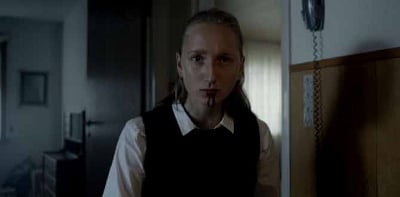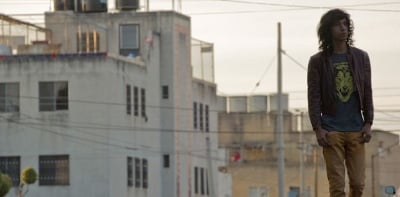In Order of Disappearance [Hans Petter Moland] review
October 2, 2014
Hans Petter Moland’s most recent film, In Order of Disappearance, is difficult to assign a definite genre to. What begins as a sombre and bloody revenge thriller soon turns on its head and flits between such tones as a family drama, a Lock, Stock-esque crime caper and a very, very dark comedy indeed.
The film starts off with Nils Dickman (Stellan Skarsgård), a snowplough driver and winner of the village ‘citizen of the year’ award, learning that his son has been murdered by drug dealers. After tracking one down and beating some answers out of him, Dickman embarks on a personal crusade to find the man behind his son’s death and personally bring him down.
If this all sounds pretty familiar to you, well, for the first half hour or so you’re pretty much correct. In fact, one could almost call these scenes slightly derivative; Moland owes a clear debt to Tarantino and the Coen brothers here, and for the first part of his film does little to create something we haven’t seen before.
This Tarantino influence makes itself apparent in how Moland handles violence in the film. Fights and murders in In Order are startlingly brutal, and this effect is compounded by Moland’s decision to focus on all the gory details of the violence; when a character is strangled to death, for example, he takes care to show the body’s feet twitching for an uncomfortable length of time.
However, as the film progresses, this sense of imitation begins to slip away as the comedic elements start to come to the surface, and it’s from this point on that In Order of Disappearance really starts to get interesting. The comedy allows the film to distance itself from its more serious American-made counterparts, and in the process it begins to carve out an identity all of its own.
Scriptwriter Kim Fupz Aakeson clearly put a lot of effort into writing the gags in In Order. The film is full of witty barbs and sight gags, which for the most part succeed in getting a laugh. Alongside this, there’s some gentle mockery of aspects of Nordic culture – one scene in particular stands out, in which two criminals disbelievingly discuss the high standard of living in Norwegian prisons. Coupled with Moland’s keen eye for making the most of brutality, and we get some truly good black comedy. It’s rare to find a film that can make a man throwing a series of bodies over a waterfall so funny.
Part of what helps this to succeed is Moland’s decision to shift the focus around. Rather than sticking exclusively with Nils’ stern-faced rampage, he takes the time to flesh out his antagonists and allow us short glimpses into their lives. We get to see the leader’s home life and his strained relationship with his ex. We learn that two of his henchmen are hiding their love for each other from their comrades, and in one of the film’s most entertaining scenes, we see the Serbian cartel members joking around on a ski slope. It’s partly because Moland takes the time to establish and develop these relationships that the comedy works so well; we feel connected to these characters and so it becomes easier to relate to them.
Unfortunately, all this time spent developing the villains has the knock-on effect of leaving very little time to spend with Nils himself. Almost as soon as he has learned that his son was murdered, he is out on the streets beating gang members to death and disposing of corpses. There is no build-up to this, no scenes in which we learn anything about his character to make this development seem like a natural progression; he simply goes from ‘citizen of the year’ to cold-blooded killer in the space of a few minutes. This is through no fault of Skarsgård’s, who does his best with what the material offers, but unfortunately what it offers him rarely amounts to more than ‘stoic’ and ‘angry’.
Similarly, while the film’s antagonist’s relationship with his ex-wife is well-explored, we are shown little of what has caused Nils’ own marriage to break down. Presumably it’s due to his ongoing murder rampage, but again, we are never shown any indication that she knows what is going on, or that Nils is acting any differently at home. It feels as if some of these scenes may have been cut to make room for all the violence later on, but all this does is remove another layer of complexity from Nils’ character.
Leaving this aside however, there is still a lot to like about In Order. From a technical standpoint it’s pretty impressive; the sound design is tense and thick, full of heavy thumps and mechanical clanking that lends a real weight to the action scenes. The shots, on the whole, are well-composed, and it’s a testament to Moland’s skill that he manages to capture such varied-looking images when for the most part the landscape is simply covered in snow. It may have some focus and character issues, but it still remains an entertaining film.
Adam Button
In Order of Disappearance (Kraftidioten) is currently showing at Hyde Park Picture House
Filed under: Film, TV & Tech
Tagged with: film reviews



Comments